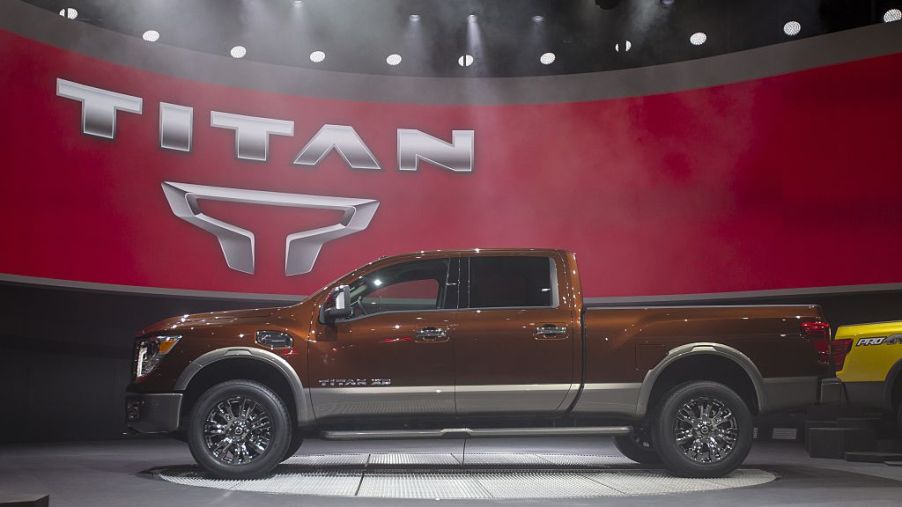
Nissan Titan History: How Nissan Found Success With an American Classic
Founded in 1933, Nissan has long been associated with sporty sedans such as the Altima, Maxima, and Sentra. Even so, another vehicle its had much success with is the Nissan Titan pickup. Now in its second generation, the Titan has a relatively short but exciting history that we would like to take a look at.
Nissan Titan’s introduction
The News Wheel reports that the Nissan Titan was introduced for the 2004 model year. Named for the mythological Greek Titans, the truck was actually conceived in 1999, although production did not begin until 2003.
The truck was built on Nissan’s F-Alpha platform, which was also being used by Nissan’s Armada and Infinity’s QX56. It was widely acclaimed and became a finalist for the North American Truck of the Year award during 2004.
What attracted buyers to the Titan originally was its style and advanced features. The first generation Titan came equipped with a 32-valve, 5.6 liter engine that provided amazing power and towing capabilities.
Nissan offered extended and crew cab versions, both of which had roomy interiors and state-of-the-art features such as a navigation system, traction control, XM satellite radio, and a rear sonar warning system.
Sales of the first-generation Titan peaked in 2010, when the automaker sold more than 23,400 trucks. The earliest Titans also won several awards, including:
- Most Significant Vehicle of the Year in 2004 from Edmunds
- Most Wanted Large Trucks in 2005, Edmunds
- Ideal Vehicle Award in 2007, AutoPacific
Second generation Titan
The second-generation Titan was revealed during the 2015 North American International Auto Show, and was released for the 2016 model year. Like the first-generation trucks, the newer version also contains a 5.6 liter engine.
However, that motor is more powerful and can produce up to 390 hp and 394 lb-ft of torque. Nissan also gives consumers the option of a V8 Cummins diesel engine that is capable of nearly 555 lb-ft of torque.
Nissan offers two versions of its second-generation Titan: XD and regular. Both come with either a standard, 2-door cab, a 4-door crew cab, or 4-door extended king cab. Standard equipment on both models includes wireless audio streaming, keyless entry, rearview backup cameras, push-button ignition, and power windows and door locks.
The second-generation Nissan is currently being produced in Canton, Mississippi. Upon its release in 2016 Titan sales increased significantly over the previous year, jumping from 12,140 in 2015 to 21,880. Sales more than doubled the next year, when more than 52,900 Titans were purchased. In fact, the 2017 model year saw the highest number of sales since the first Titan was introduced in 2004.
2020 Refresh
The second-generation Titan is still in production; however, Nissan has announced a refresh for the 2020 model year. It recently unveiled the refreshed version during the Texas State Fair, and offer a teaser image on its website along with the captain “coming soon.”
According to those who viewed the refresh, it includes some updated style features such as a new grill, bed lighting system, and LED headlights and taillights. Significant changes include the elimination of a regular cab on both the regular and XD models, and replacing the Cummins V8 diesel engine with a 5.6 liter V8 gasoline motor.
An eight-inch multimedia display will be included for the first time. Plus, consumers will also have the option to upgrade to a larger nine-inch screen.
The Nissan Titan has undergone numerous changes over the years. Even so, one thing has remained constant, and that is the truck’s appeal. The pickup continues to be well received, which means it probably isn’t going away anytime soon.


